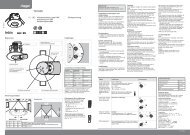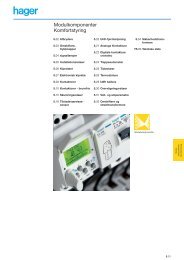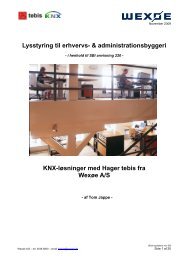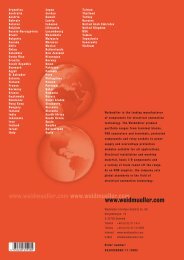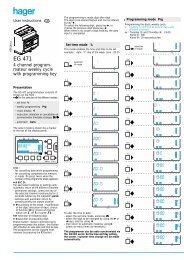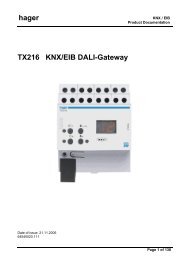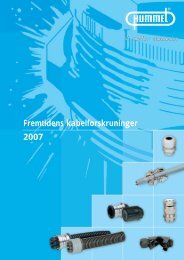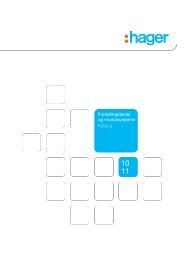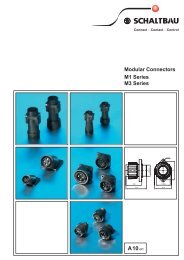SMT/THR PCB-COMPONENTS
SMT/THR PCB-COMPONENTS
SMT/THR PCB-COMPONENTS
You also want an ePaper? Increase the reach of your titles
YUMPU automatically turns print PDFs into web optimized ePapers that Google loves.
• circumferential wetting of the<br />
secondary side (i.e. underside from<br />
the point of view of the component)<br />
must not fall below 330°<br />
• solder wetting of the original land<br />
face (i.e. residual ring in the case of<br />
<strong>THR</strong> soldered joints) on the primary<br />
side is defined as 0%<br />
• solder wetting of the original land<br />
face on the secondary side must be<br />
at least 75%<br />
With regard to quality control, these<br />
standards result in several requirements<br />
for leaded components. It is necessary<br />
to take into account the fact the two<br />
different designs are normally used for<br />
the <strong>THR</strong> process:<br />
• shorter pins in comparison with the<br />
<strong>PCB</strong>s thickness<br />
• longer pins in comparison with<br />
the <strong>PCB</strong>s thickness (approx.<br />
1.0 – 1.5 mm overhang)<br />
The following requirements apply in the<br />
case of short pins:<br />
• the soldered joints on the primary<br />
side of the <strong>PCB</strong> must be visible<br />
• in the case of components with pins<br />
under the insulator, the height of the<br />
stand-off or the product design must<br />
be adequately dimensioned for visual<br />
inspection<br />
These requirements apply to long pins:<br />
• the soldered joints on the secondary<br />
side must be visible<br />
• by comparison, soldered joints on<br />
the primary side are not necessary<br />
In the case of destructive inspections<br />
in conjunction with <strong>THR</strong> components,<br />
demands are also placed on the <strong>PCB</strong>.<br />
The force needed to pull the pins out of<br />
the soldered joint is checked to ensure<br />
the quality of <strong>PCB</strong> production:<br />
Required pull-out force:<br />
- for short pins: approx. > 150 N<br />
- for long pins with solder meniscus on<br />
the primary and secondary sides:<br />
approx. > 220 N<br />
Solutions and recommendations from Weidmüller<br />
Short pin pulled out with pull-out<br />
force of >150N<br />
Short pins with a solder meniscus only on the primary side attains a comparably<br />
high stability which is otherwise only possible when using the conventional THT.<br />
Hence <strong>THR</strong> components - like Weidmüllers SL-<strong>SMT</strong> - fitted with short <strong>THR</strong> pins have<br />
a considerable advantage over real surface-mount connections.<br />
The special design of the SL-<strong>SMT</strong> pin headers from Weidmüller permits visual<br />
inspection of a <strong>PCB</strong>s primary side, even in the case of variants with an 180°<br />
outgoing direction, thus creating the prerequisite for quality control in parallel<br />
with the process.<br />
However it is important that the control side of the components is not concealed by<br />
other high elements. Weidmüller recommends therefore, during the layout of the<br />
<strong>PCB</strong>, to take into consideration the placement possibilities of the components on the<br />
primary or quality inspection side.<br />
For comparison:<br />
in the case of surface connections with<br />
SMD components, the required pull-out<br />
force amounts only to about 15 – 20 N.<br />
APPLICATION INFORMATION 17



